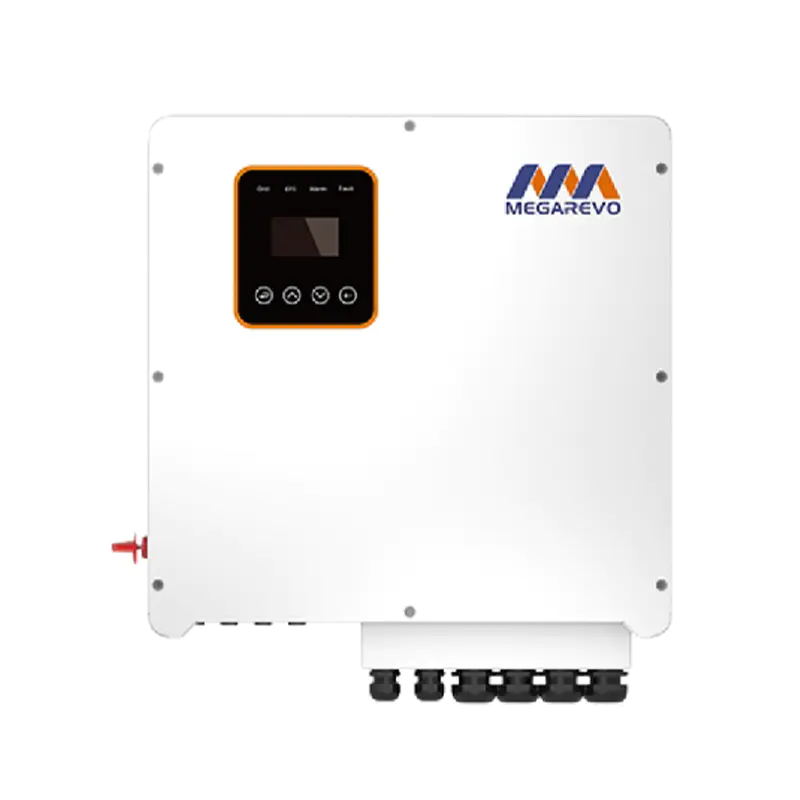-
 FAST SHIPPING
FAST SHIPPING
-
 COMPETITIVE PRICE
COMPETITIVE PRICE
-
 EXCELLENT AFTER-SERVICE
EXCELLENT AFTER-SERVICE
How to Set Up Solar Panels for an RV: A Practical Guide
Dec 09,2025How Do You Make Money From Solar Panels: Practical Strategies
Dec 05,2025How to Keep Snow Off Solar Panels: Practical Tips for Winter Care
Nov 24,2025How to Build a Solar Farm: Requirements, Costs & Risks
Nov 20,2025Avoid Refurbished Solar Panel Scams — How to Verify Second-Hand Panels
Nov 14,2025Solar power systems, while incredibly efficient, rely heavily on a stable grid connection for consistent operation. But what happens when there’s a grid fault or a sudden voltage fluctuation? These situations can potentially damage your equipment, cause a disruption in power supply, or even pose safety risks. This is where the intelligent features of modern photovoltaic inverters come into play, offering solutions to these challenges and ensuring that your solar system continues to operate safely and efficiently under varying grid conditions.
A key technology that modern inverters employ to handle grid instability is anti-islanding protection. Islanding refers to a scenario in which the inverter continues to supply power to the local electrical circuit even though the grid is down. This can happen during power outages, and if it occurs, it could pose a risk to anyone working on the grid, as they may unknowingly come into contact with energized circuits. To prevent this, photovoltaic inverters are designed with a built-in anti-islanding feature that continuously monitors grid conditions. If a grid fault is detected—such as an outage or voltage fluctuation—the inverter will immediately stop supplying power to the local load. This sudden shutdown ensures that the system doesn't continue to feed electricity into the grid, which could be dangerous for utility workers trying to restore power.
Additionally, modern inverters are equipped with sophisticated voltage and frequency detection capabilities, which allow them to synchronize seamlessly with the grid under normal conditions. But when there are fluctuations, such as surges, dips, or even full grid outages, the inverter adjusts its operations accordingly. For instance, when voltage levels exceed or fall below acceptable limits, the inverter will either shut down or limit its output to ensure it doesn't contribute to further instability. In doing so, it protects both the solar system and the connected load from potential damage caused by fluctuating grid power.

Inverters also utilize Maximum Power Point Tracking (MPPT), which plays a crucial role in managing system efficiency in response to external changes like shading, temperature, or fluctuating grid conditions. MPPT technology ensures that the inverter adapts the solar panel’s output to the optimal power point, enhancing energy efficiency. During grid disturbances, MPPT ensures that the inverter still operates at peak efficiency even when grid voltage and frequency are less predictable.
Together, these built-in safety features—anti-islanding, voltage regulation, and MPPT technology—create a robust defense mechanism for your solar power system. They not only maximize energy generation during stable grid conditions but also ensure that your system doesn’t contribute to grid instability during a fault. As a result, you can have peace of mind knowing that your photovoltaic inverter will handle grid fluctuations, safeguard your solar system, and comply with safety regulations, all while ensuring uninterrupted performance. Whether you're looking to protect your home from power outages or ensure smooth operation in commercial setups, these inverters are designed to keep the power flowing safely, even in the most unpredictable grid environments.
←
Maximizing Solar Power in Cloudy Conditions: How Foldable PV Panels Perform
→
Understanding Battery Efficiency Over Time: Maximizing Solar Energy for Years to Come
 +31610999937
+31610999937 [email protected]
[email protected] De Werf 11, 2544 EH The Hague, The Nederland.
De Werf 11, 2544 EH The Hague, The Nederland. WhatsApp: +1 (917) 257 2995/
WhatsApp: +1 (917) 257 2995/Copyright © 2023 Uni Z International B.V. VAT: NL864303440B01 All Rights Reserved
